sandbox/popinet/gulf-stream.md
The Gulf Stream
The setup is as close as possible to that used by Hurlburt & Hogan, 2000 but uses the layered solver described in Popinet, 2020.
See Hurlburt & Hogan, 2000 for details but the main characteristics of the setup are:
- 5 isopycnal layers (see Table 2 of H&H, 2000 for the reference densities, thicknesses etc.)
- Wind stress in the top layer given by the monthly climatology of Hellerman & Rosenstein, 1983
- “Compressed bathymetry” as in H&H, 2000
- Quadratic bottom friction (Cb = 2 x 10-3), Laplacian horizontal viscosity (10 m2/s)
- Atlantic Meridional Overturning Circulation (AMOC) driven by fluxes at the northern and southern boundaries (see Table 2 of H&H, 2000 for the values of fluxes)
Some of the differences below can be due to the longer averages taken in Basilisk (> 10 years versus a few years for H&H, 2000).
Movie and snapshots
Animation of the relative vorticity (approx. 2 years), min and max are \pm 10-4 s-1. The spatial resolution is 1/24 degree.

|

|
|
|
|
Mean Sea Surface Height (SSH)

|

|
|
|
|

|

|
|
|
|
SSH standard deviation

|

|
|
|
|
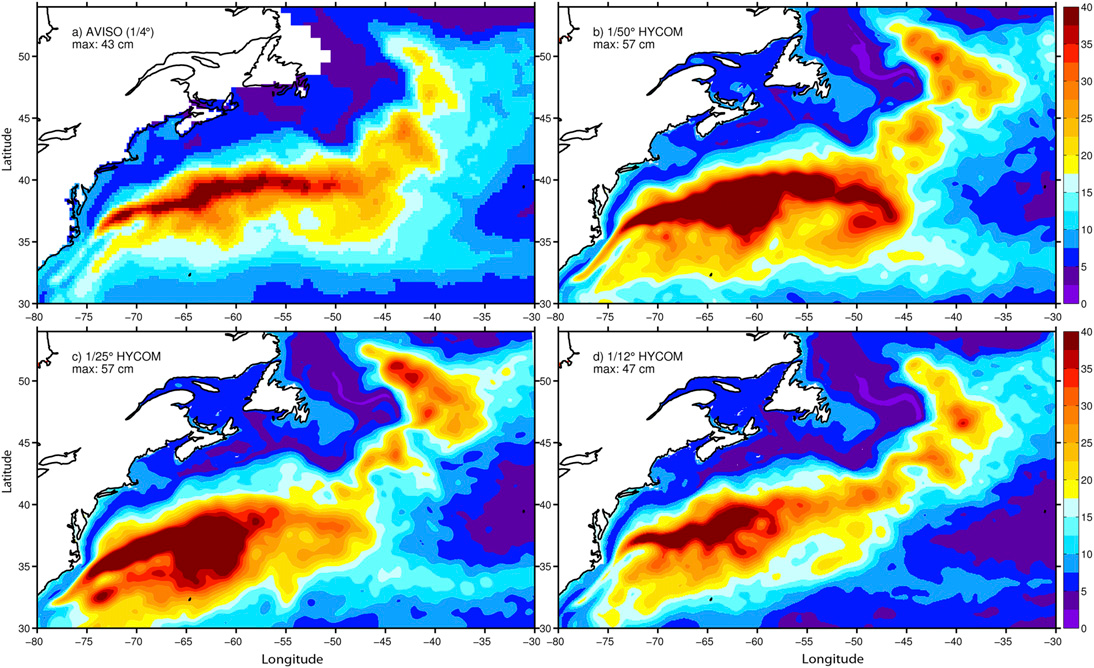
SSH standard deviation from Chassignet & Xu, 2017, fig. 7
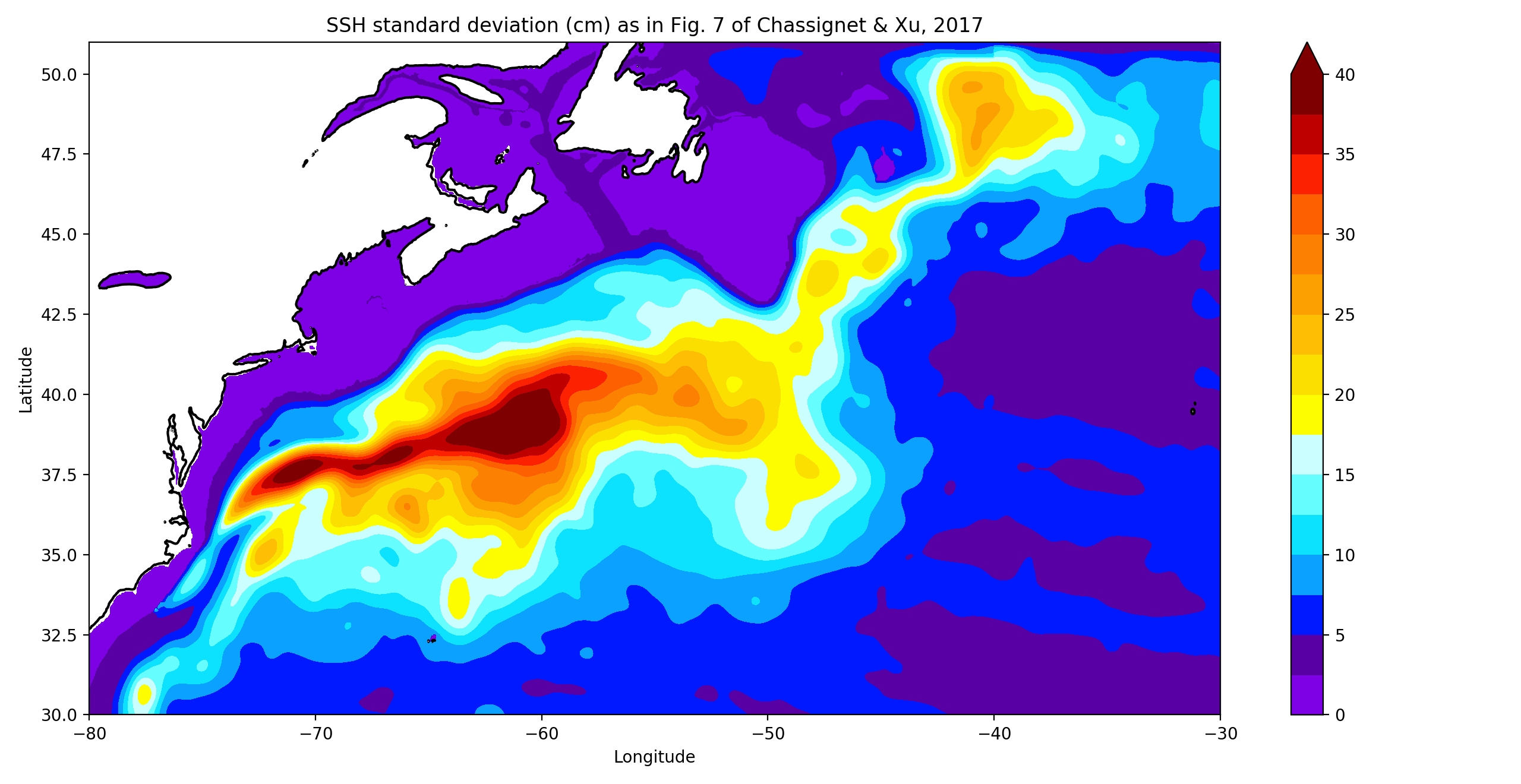
SSH standard deviation, Basilisk, 1/24 degree
Surface kinetic energies
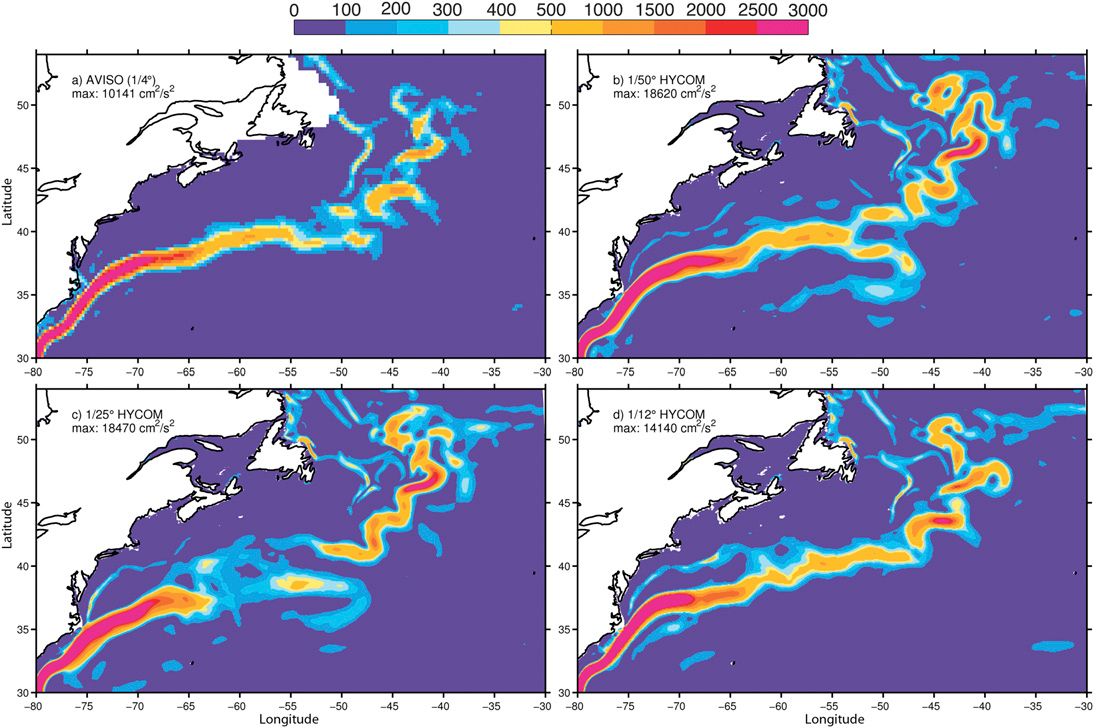
Mean surface kinetic energy from Chassignet & Xu, 2017, fig. 4
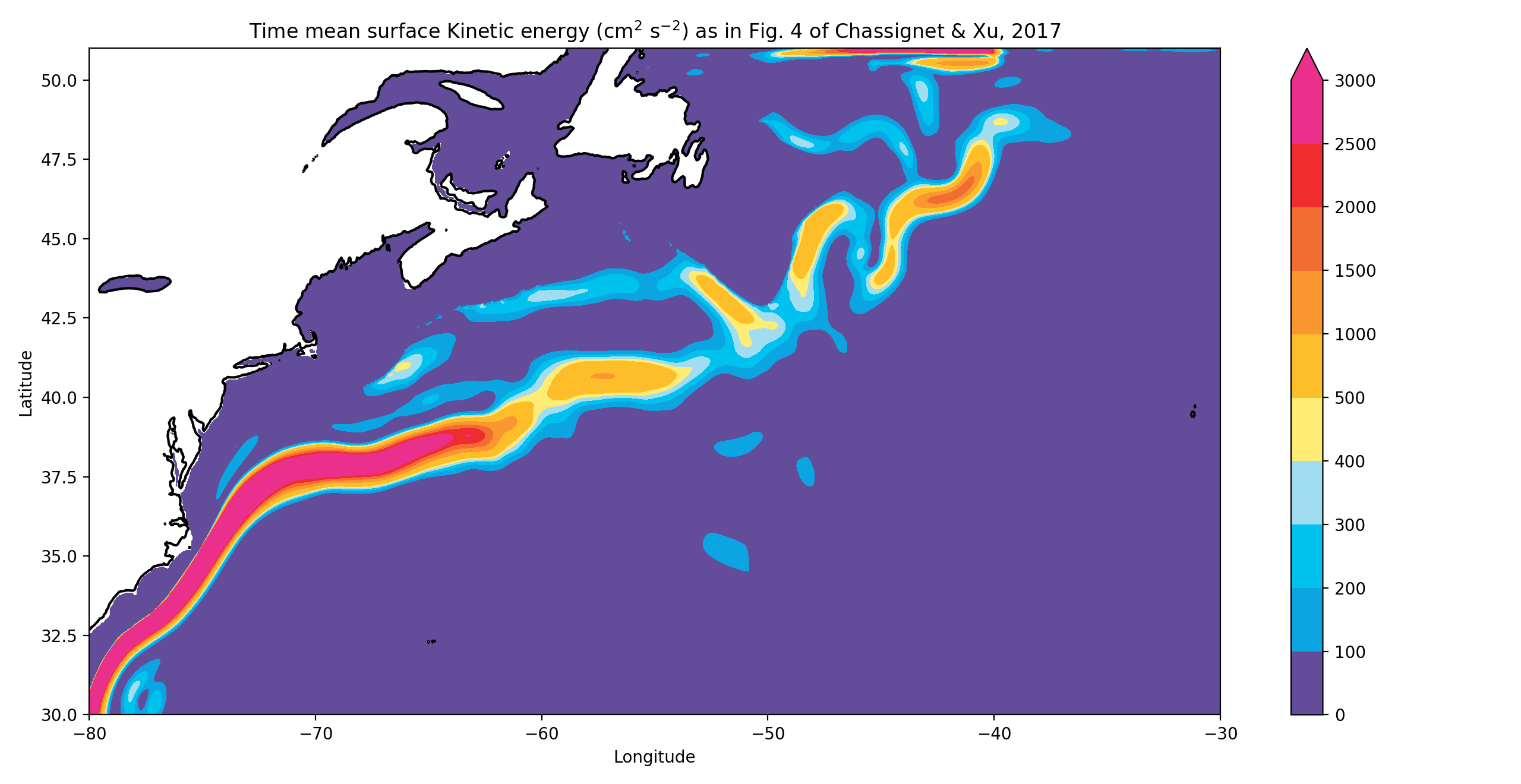
Mean surface kinetic energy, Basilisk, 1/24 degree
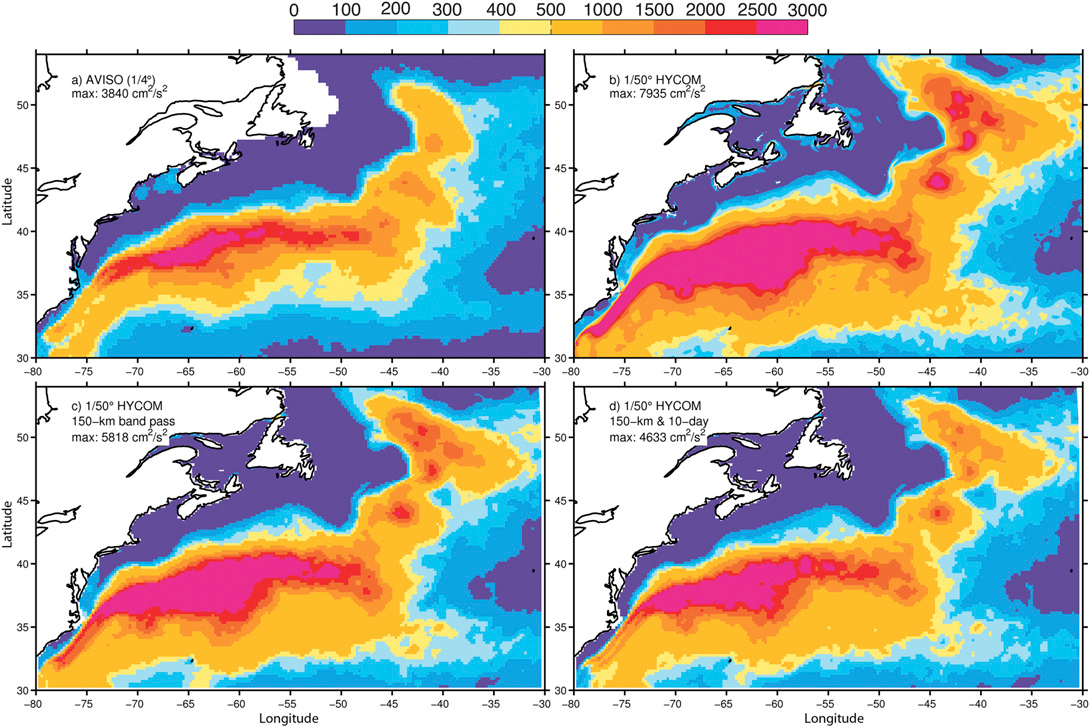
Surface eddy kinetic energy from Chassignet & Xu, 2017, fig. 14
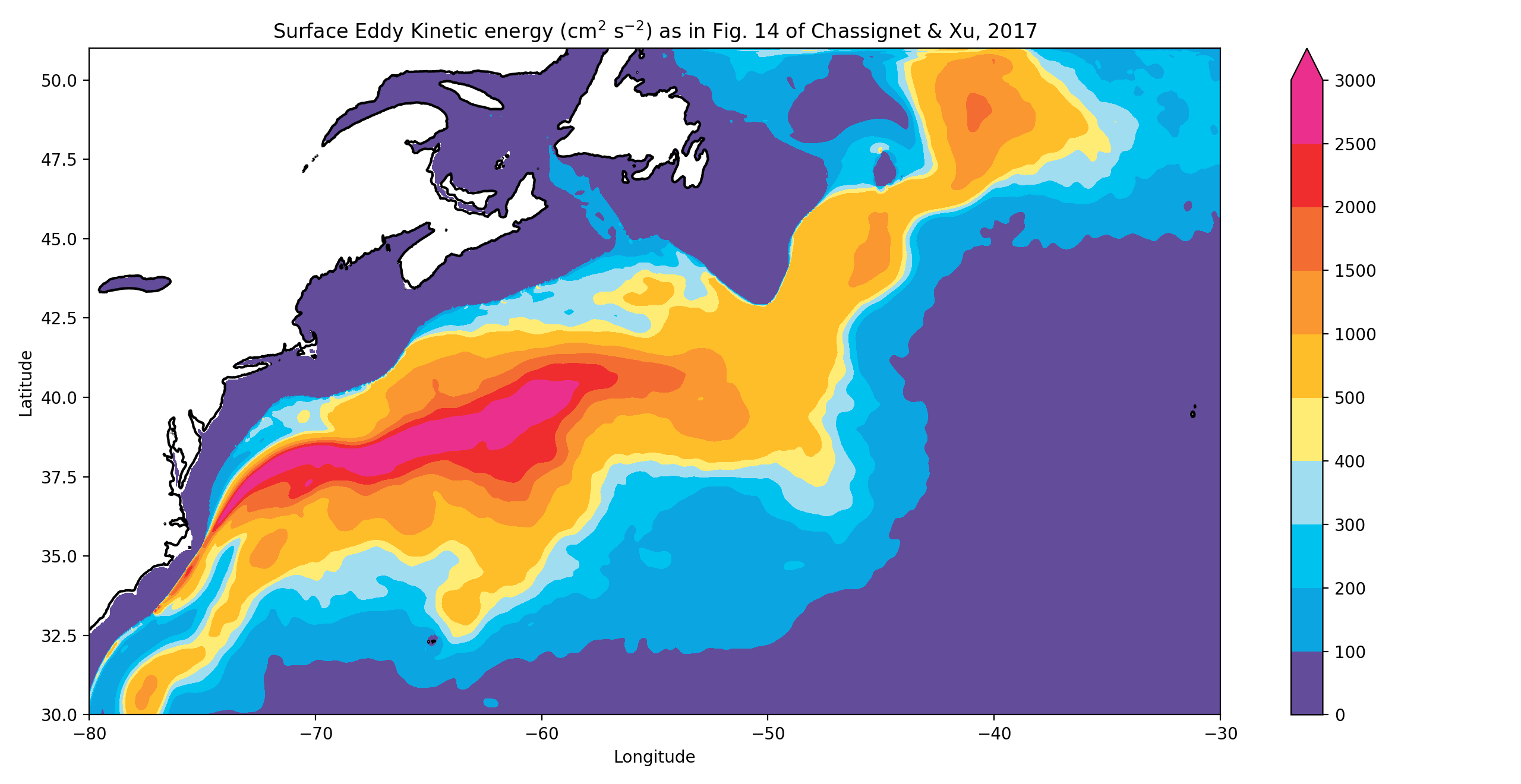
Surface eddy kinetic energy, Basilisk, 1/24 degree

|

|
|
|
|
The high values in C&X, 2017 may be due to non-converged statistics (i.e. shorter averages in Basilisk show similar features/artefacts).
Field transects
The “TOPEX” transect from Figure 5 of C&X, 2017
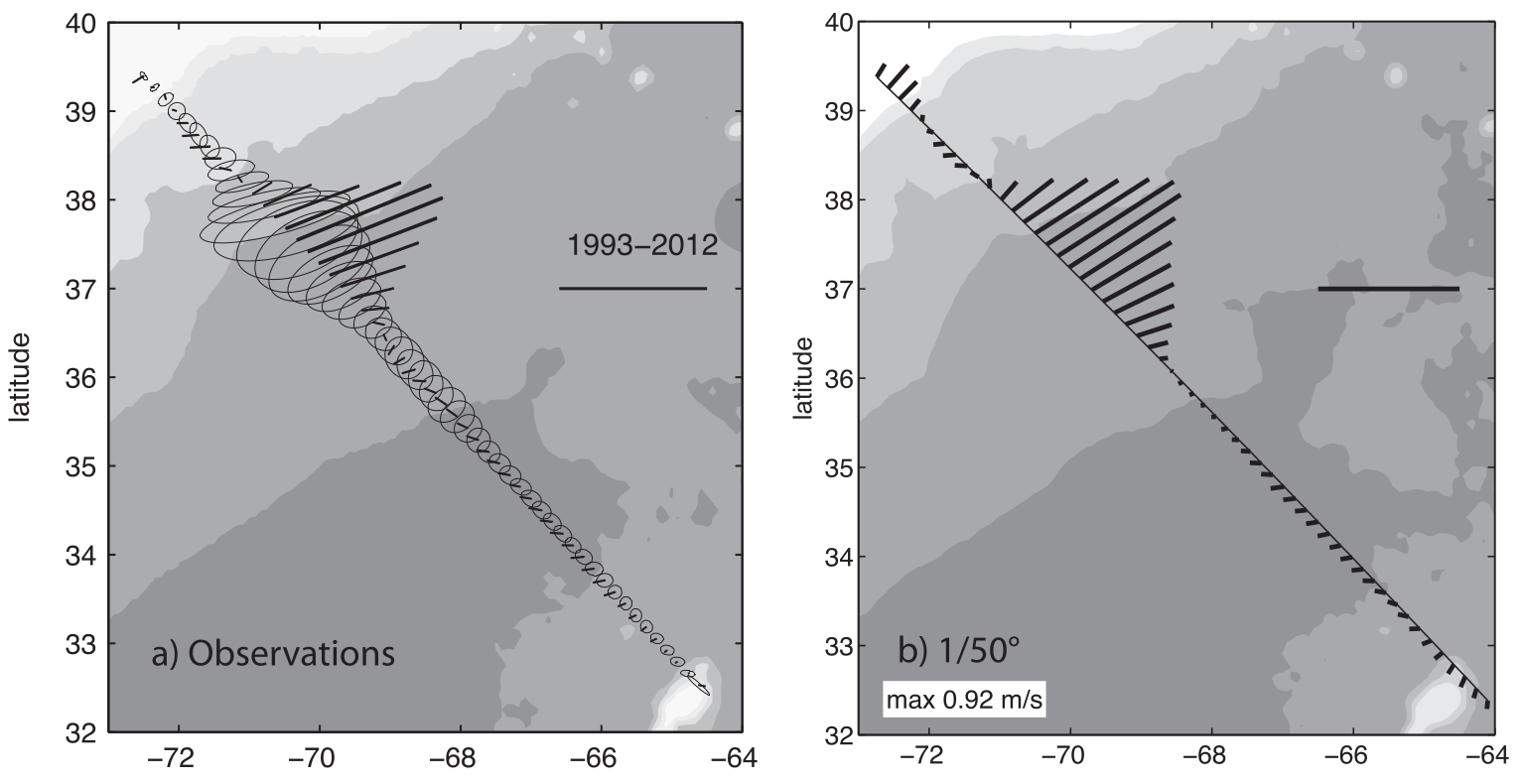
The “Oleander” transect from Figure 6 of C&X, 2017
The “Oleander” transect, Basilisk, 1/24 degree
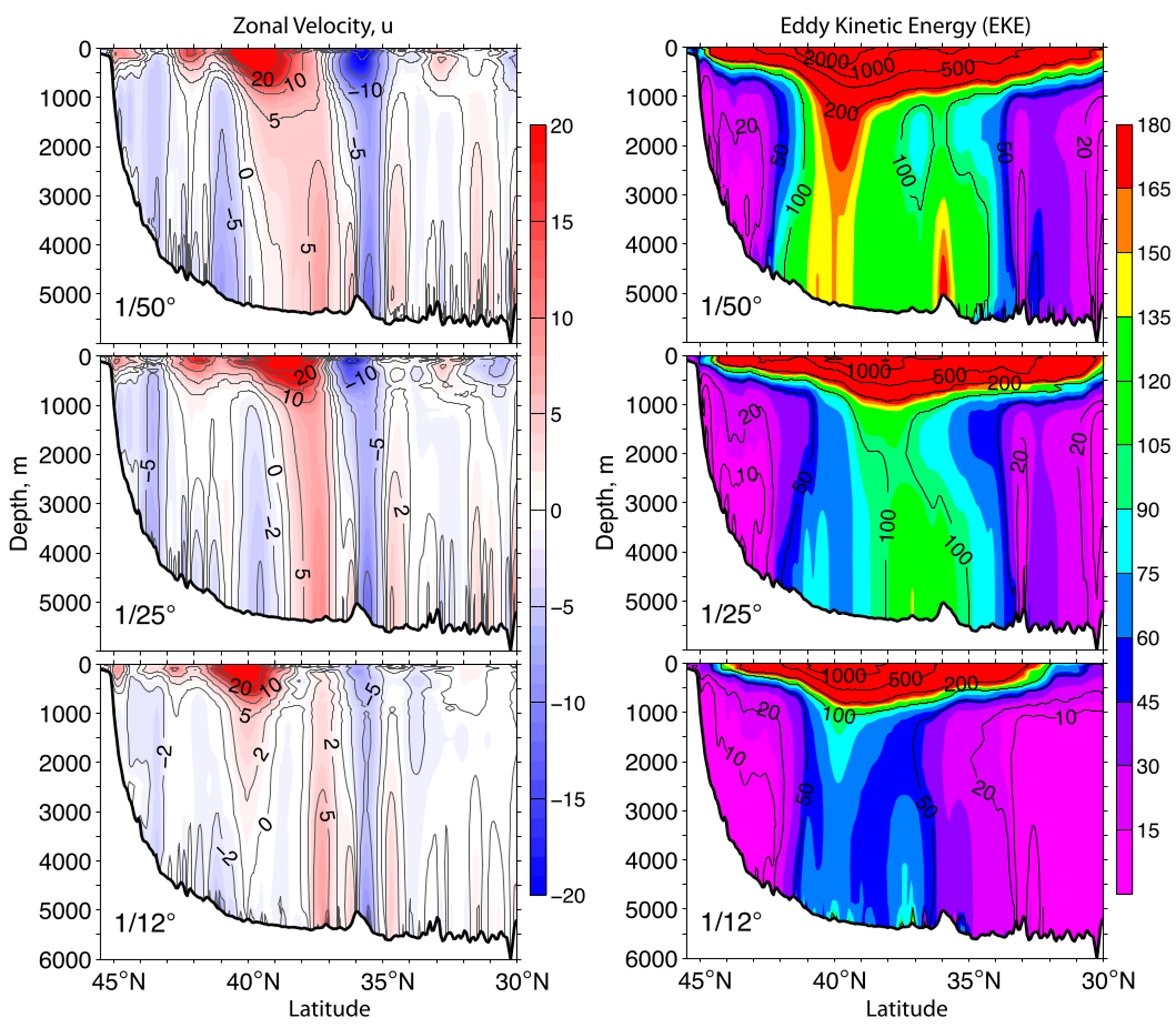
Cross-section at 55W from Figure 15 of C&X, 2017, 32 layers
|
|
|
|
|
|
Abyssal currents

|

|
|
|
|

|

|
|
|
|
Note that there is a factor \rho_0 = 1000 missing in H&H, 2000.

|

|
|
|
|

Abyssal layer mean current from Figure 3 of H&H, 2008, 1/32 degree
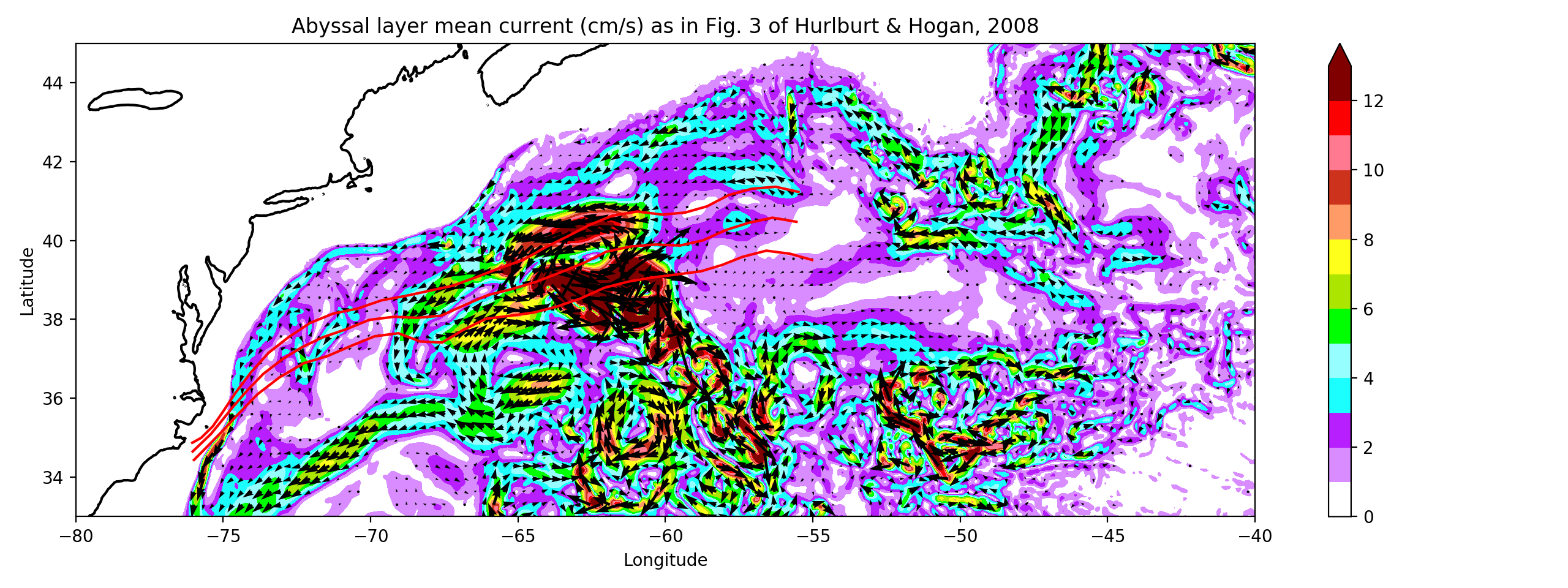
Abyssal layer mean current, Basilisk, 1/24 degree

|

|
|
|
|

|

|
|
|
|
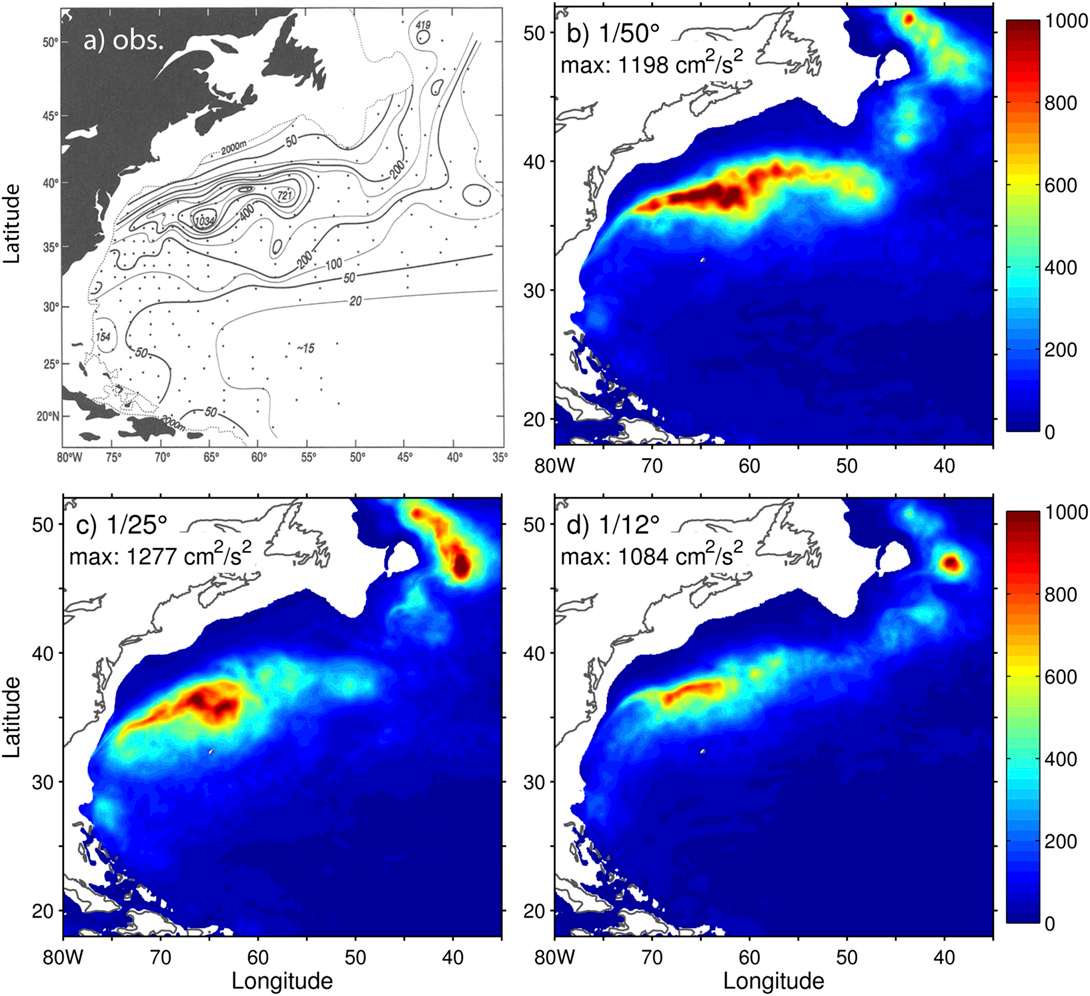
EKE at 700 m from Chassignet & Xu, 2017, fig. 17
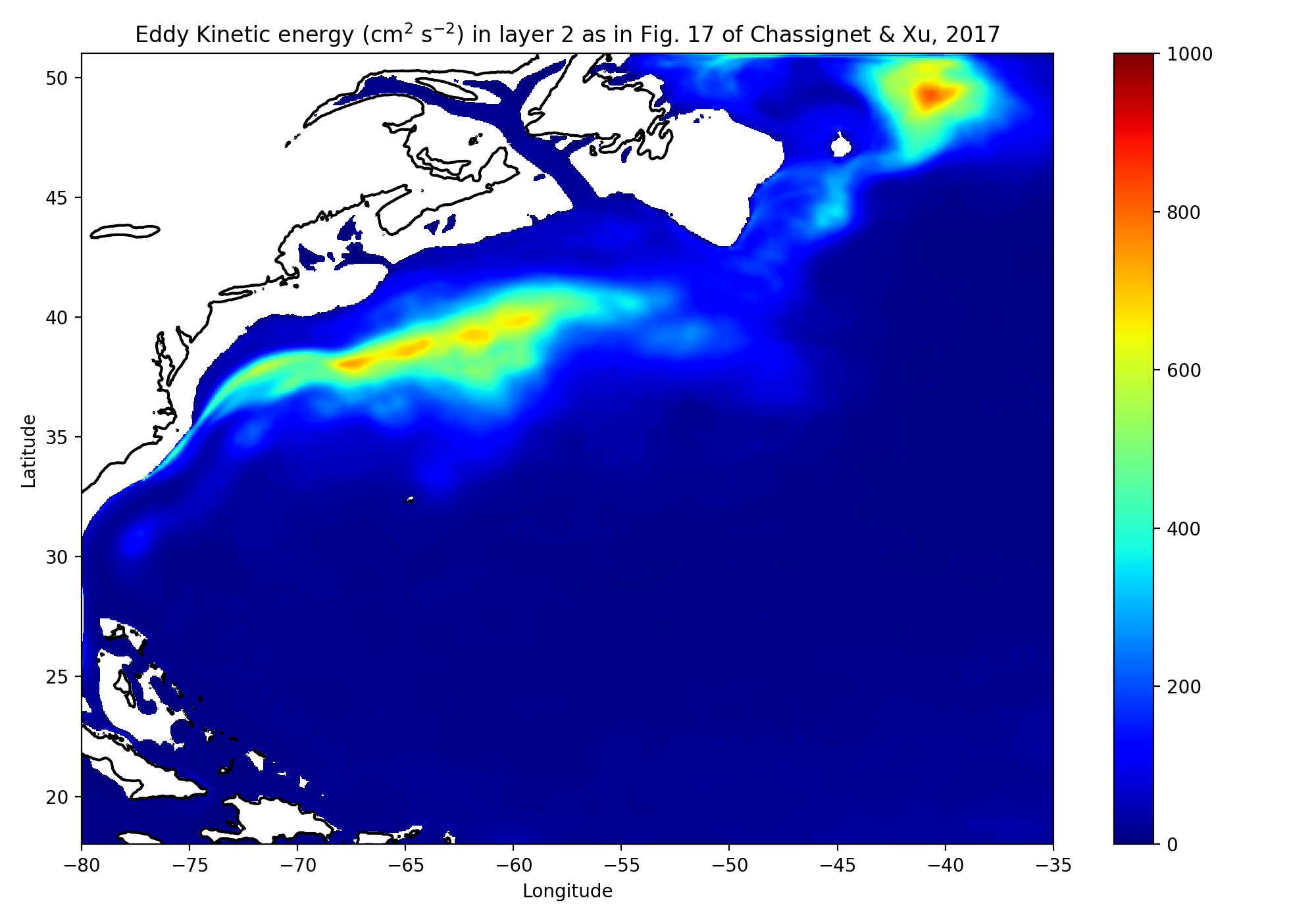
EKE in layer 2 (750–500 m), Basilisk, 1/24 degree
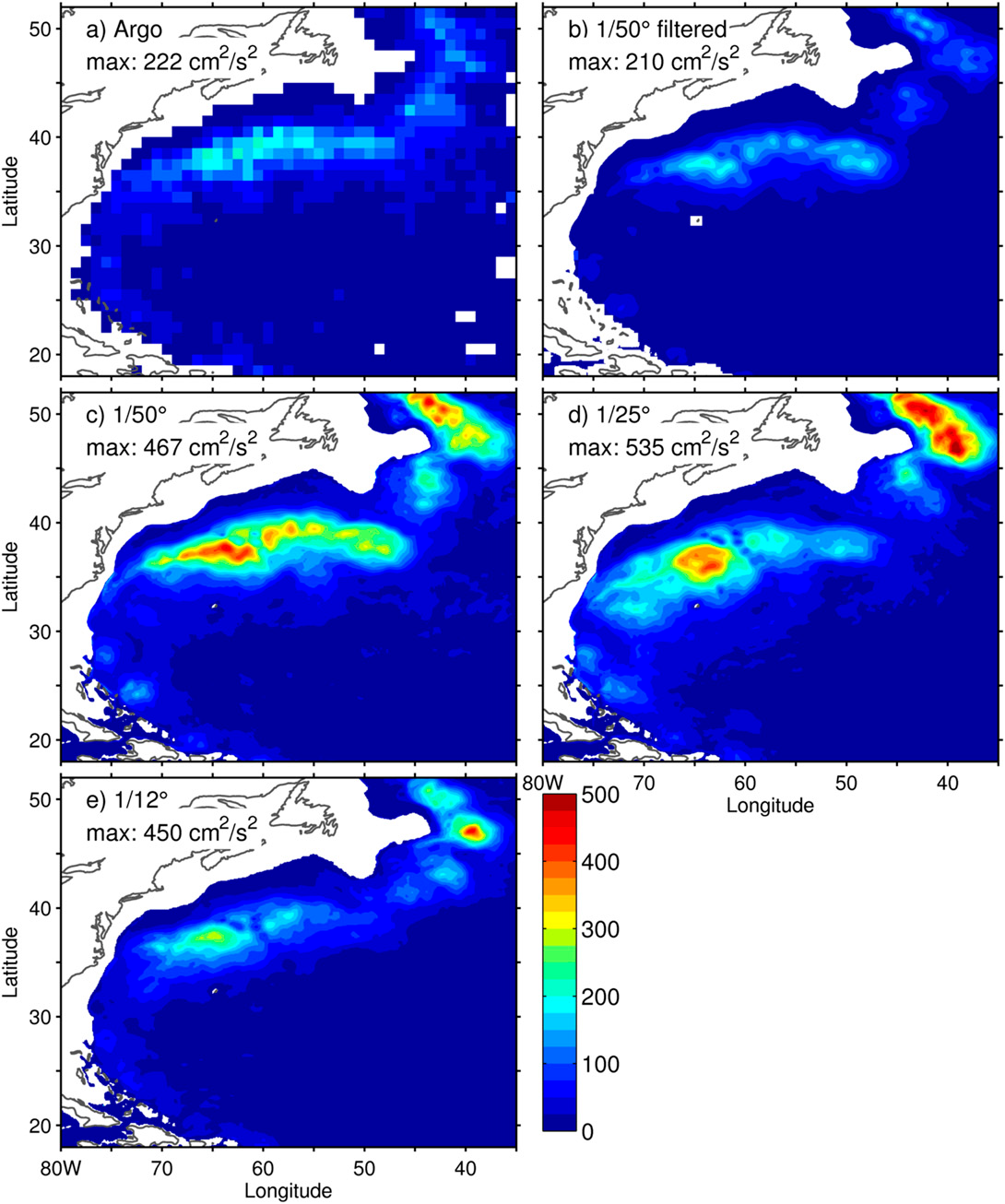
EKE at 1000 m from Chassignet & Xu, 2017, fig. 18
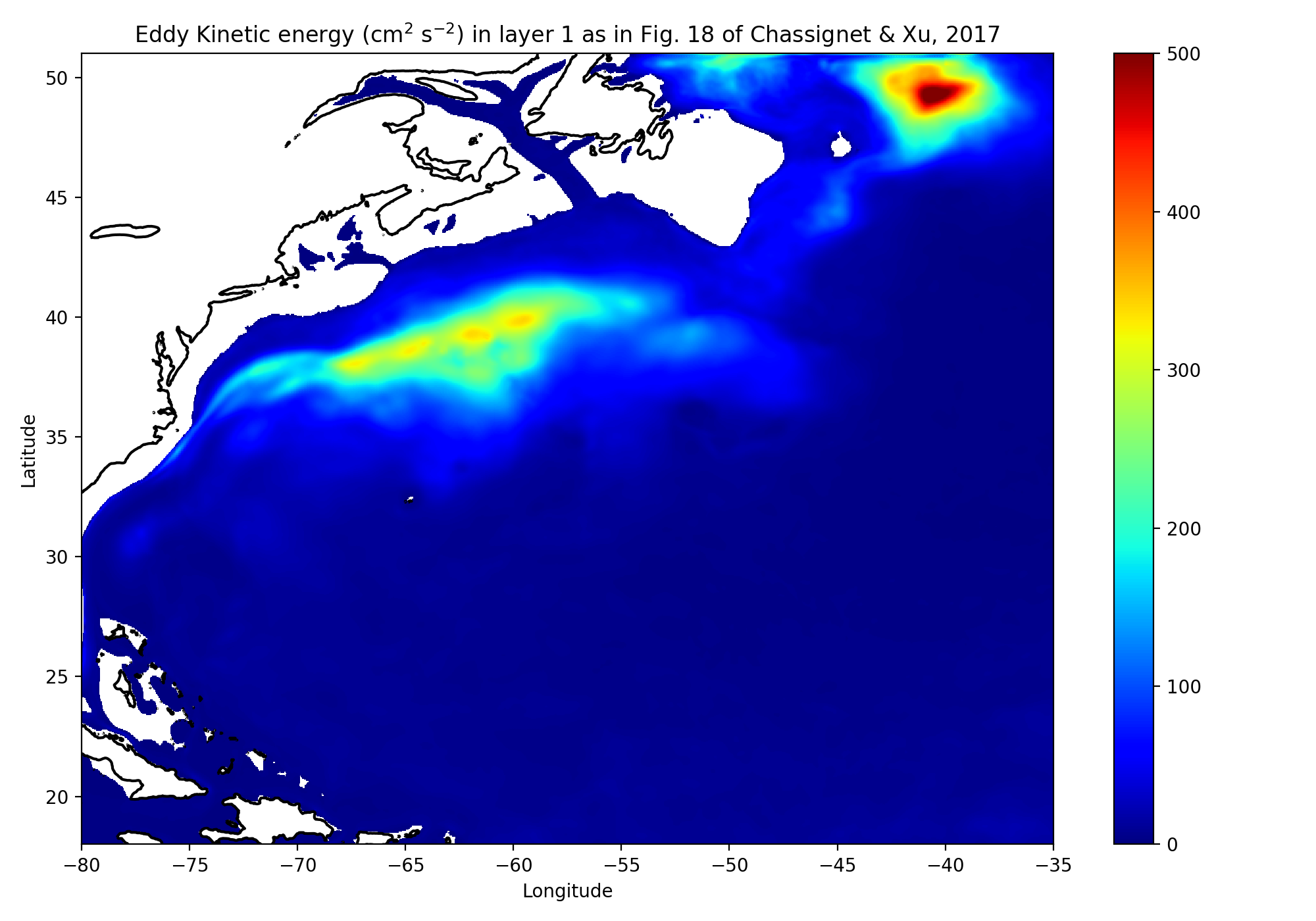
EKE in layer 1 (1000–750 m), Basilisk, 1/24 degree
Top layer
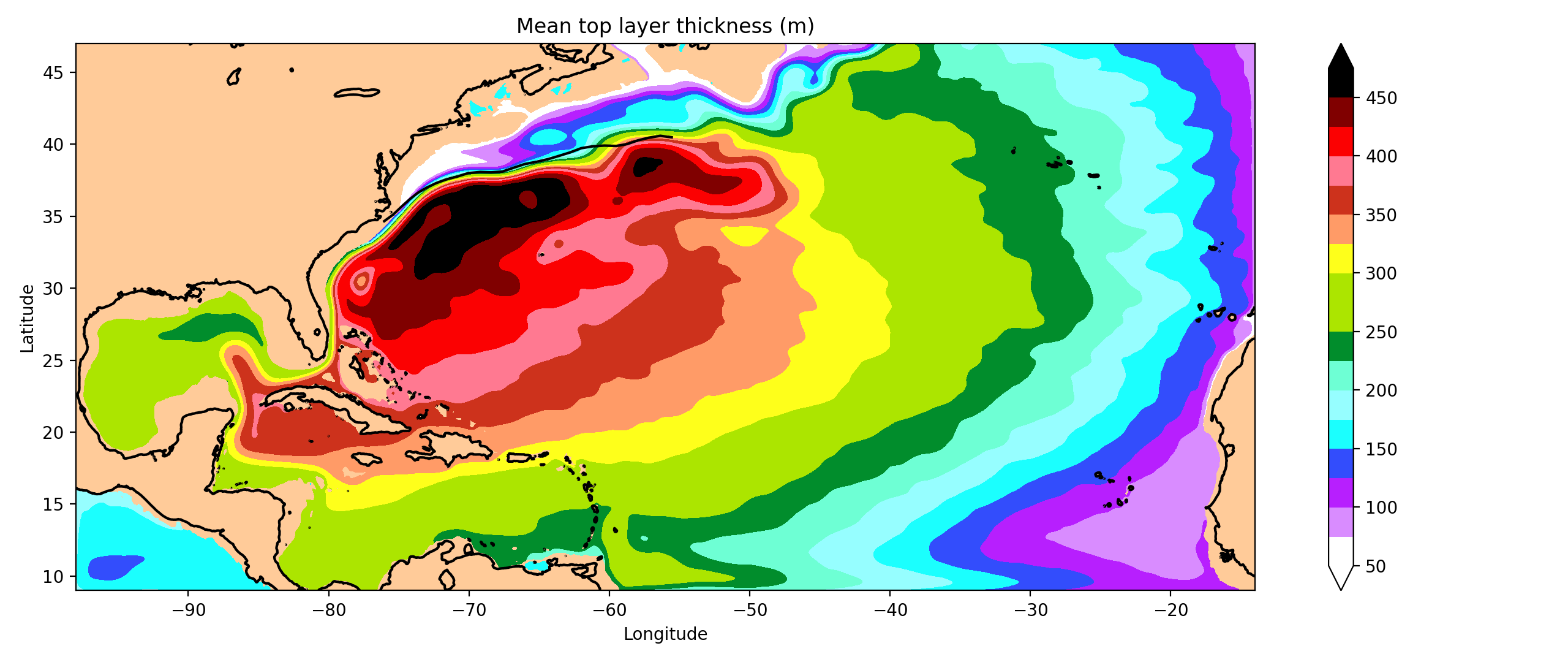
Mean top layer thickness (m)
Computational cost etc.
The 1/24 degree domain spans 98W to 14W and 9N to 51N using 2048 \times 1024 grid points. Only five (isopycnal) layers are used in the vertical as in H&H, 2000. The timestep is 150 seconds and the simulation ran for approx 20 years with averages taken after a spinup of 5 years.
The simulation ran at approximately 23 simulated years per day on 2048 cores of the Irene supercomputer at TGCC (i.e. a computational speed close to 109 cells \times timestep / second).
References
| [chassignet2017] |
Eric P Chassignet and Xiaobiao Xu. Impact of horizontal resolution (1/12 to 1/50) on Gulf Stream separation, penetration, and variability. Journal of Physical Oceanography, 47(8):1999–2021, 2017. [ DOI ] |
| [hurlburt2008] |
Harley E Hurlburt and Patrick J Hogan. The Gulf Stream pathway and the impacts of the eddy-driven abyssal circulation and the Deep Western Boundary Current. Dynamics of Atmospheres and Oceans, 45(3-4):71–101, 2008. [ DOI ] |
| [hurlburt2000] |
Harley E Hurlburt and Patrick J Hogan. Impact of 1/8 to 1/64 resolution on Gulf Stream model–data comparisons in basin-scale subtropical Atlantic ocean models. Dynamics of Atmospheres and Oceans, 32(3-4):283–329, 2000. [ DOI ] |
